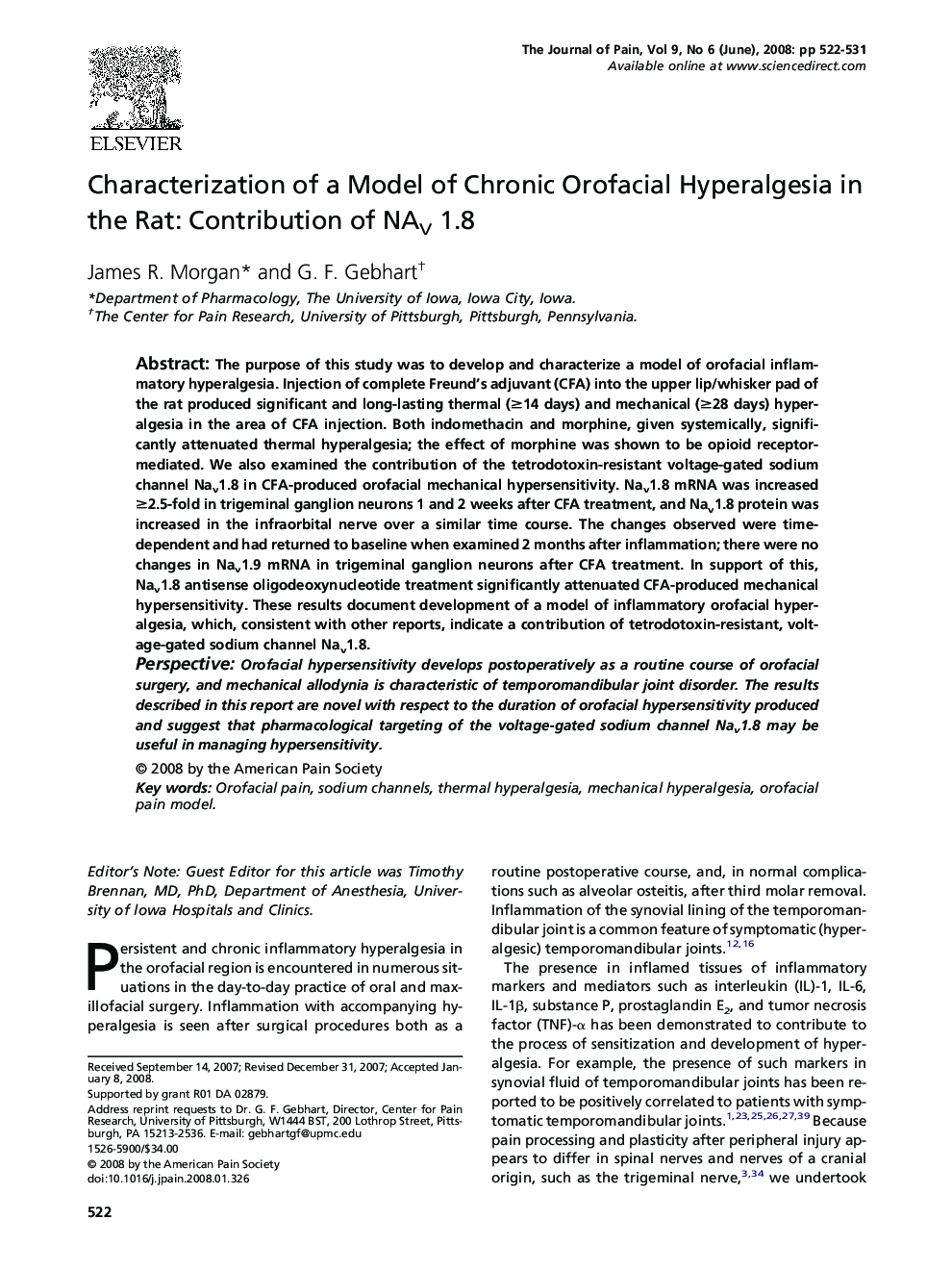| Article ID | Journal | Published Year | Pages | File Type |
|---|---|---|---|---|
| 2723657 | The Journal of Pain | 2008 | 10 Pages |
The purpose of this study was to develop and characterize a model of orofacial inflammatory hyperalgesia. Injection of complete Freund's adjuvant (CFA) into the upper lip/whisker pad of the rat produced significant and long-lasting thermal (≥14 days) and mechanical (≥28 days) hyperalgesia in the area of CFA injection. Both indomethacin and morphine, given systemically, significantly attenuated thermal hyperalgesia; the effect of morphine was shown to be opioid receptor-mediated. We also examined the contribution of the tetrodotoxin-resistant voltage-gated sodium channel Nav1.8 in CFA-produced orofacial mechanical hypersensitivity. Nav1.8 mRNA was increased ≥2.5-fold in trigeminal ganglion neurons 1 and 2 weeks after CFA treatment, and Nav1.8 protein was increased in the infraorbital nerve over a similar time course. The changes observed were time-dependent and had returned to baseline when examined 2 months after inflammation; there were no changes in Nav1.9 mRNA in trigeminal ganglion neurons after CFA treatment. In support of this, Nav1.8 antisense oligodeoxynucleotide treatment significantly attenuated CFA-produced mechanical hypersensitivity. These results document development of a model of inflammatory orofacial hyperalgesia, which, consistent with other reports, indicate a contribution of tetrodotoxin-resistant, voltage-gated sodium channel Nav1.8.PerspectiveOrofacial hypersensitivity develops postoperatively as a routine course of orofacial surgery, and mechanical allodynia is characteristic of temporomandibular joint disorder. The results described in this report are novel with respect to the duration of orofacial hypersensitivity produced and suggest that pharmacological targeting of the voltage-gated sodium channel Nav1.8 may be useful in managing hypersensitivity.
